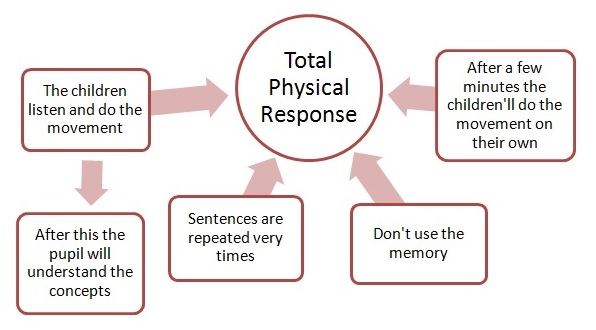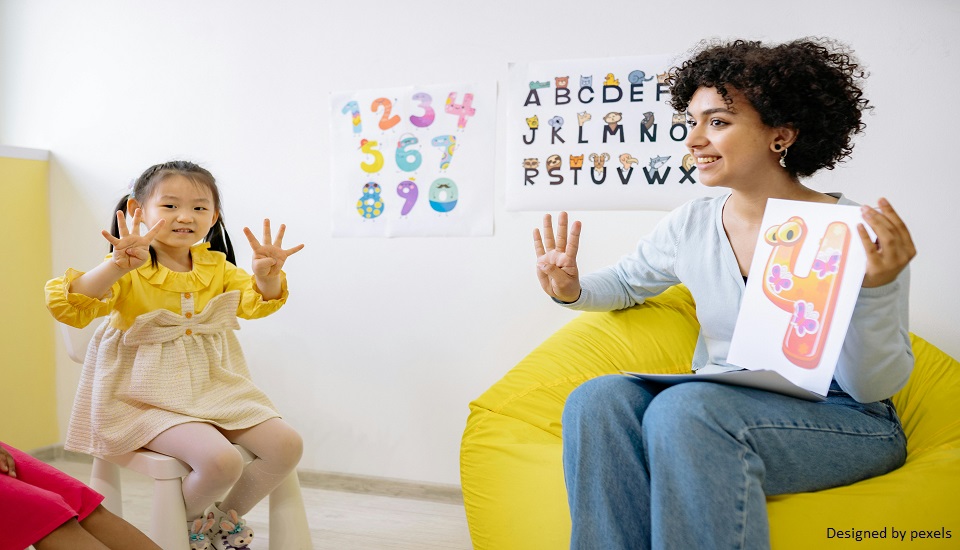Do you want your language learners not just merely memorizing the concepts and rules of vocabulary and grammar but they are actively creating stories in an immersive language learning experience?
Then, you might consider using TPRS (Teaching Proficiency through Reading and Storytelling) which is a revolutionary and effective second language acquisition method that is gaining popularity in recent times. Those TEFL teachers who have pursued courses like In-Class TEFL Mumbai, know the benefits of using the TPRS method of teaching foreign languages in the classroom.
If you also want to know more about the revolutionary TPRS method in detail, then we have got you covered. In this blog post, we will be exploring the TPRS method and how it helps learners acquire a foreign language, fostering fluency in fun and engaging ways.
Before you move to the topic, can we ask you a quick question? Do you follow us on Social Media? If not, then you’re missing out on a lot of informative content. We regularly share upgraded educational content, tips, feedback, and more. Check us out by clicking the profiles here - Facebook / Twitter / LinkedIn / Pinterest / Instagram / YouTube
Origins of TPRS Method

Source: enjoylearningenglishinprimary.wordpress.com
To understand the roots of TPRS, we must explore its predecessors: the Total Physical Response (TPR) and Comprehensible Input (CI) approaches. Developed by James Asher in the 1960s, the TPR storytelling method relied on physical actions and gestures to convey meaning, making new vocabulary more comprehensible. However, while effective for concrete words and actions, TPR fell short when dealing with abstract concepts.
Blaine Ray, a Spanish teacher seeking to enhance his students' fluency, recognized this limitation. Drawing inspiration from TPR and CI, which emphasizes the importance of comprehensible input for language acquisition, Ray crafted TPRS in the late 1980s. Initially known as Total Physical Response Storytelling, the method later evolved into Teaching Proficiency through Reading and Storytelling, reflecting its incorporation of reading as a crucial learning tool.
Principles of TPRS Method
Let’s get to know the three fundamental principles of TPRS:
Comprehensible Input
Students are exposed to language input that is mostly understandable, either through context, visuals, or translations. This aligns with the CI theory, which posits that comprehensible input is essential for language acquisition.
Storytelling
Rather than memorizing isolated vocabulary and grammar rules, students co-create stories with the teacher in the target language. This interactive process fosters engagement and facilitates language acquisition in a natural, contextual manner.
Reading
The final phase of TPRS involves reading texts that contain mostly known vocabulary or cognates. This reinforces the acquired language and transitions students from processing aural input to written input.
Three Phases of TPRS Method
Let’s get to know about TPRS's three distinct phases. They are:
Phase 1: Establishing Meaning
In this initial phase, the teacher introduces new vocabulary that will be used in the lesson. For concrete words or actions, Total Physical Response techniques (gestures, miming) are employed. For abstract concepts, translations or visual aids are provided to convey meaning.
This phase involves repetition and reinforcement to ensure students fully assimilate the new vocabulary before progressing to the next stage.
Phase 2: Ask a Story
The second phase is where the magic of TPRS truly unfolds. Instead of lecturing, the teacher co-creates a story with the students by prompting them to contribute details, characters, or plot points. This collaborative storytelling process encourages active participation and fosters language acquisition through contextualized and engaging interactions.
Phase 3: Reading
In the final phase, students transition from aural input to written input by reading texts that incorporate the vocabulary and structures encountered in the co-created stories. These texts can be summaries of the stories or simple readers with cognates, pictures, and glossaries for unknown words.
Learn, how ESL teachers use linguistics to teach English, here:
The TPRS Recipe: ACT, ACT, Describe
To ensure students receive ample exposure and repetition, TPRS teachers follow a structured recipe known as "ACT, ACT, Describe." This technique consists of three components:
Add (a character, detail, or sentence)
The teacher introduces the initial sentence or scenario, and students contribute by adding elements to the story.
Circle and Triangle
In the "circling" phase, the teacher asks simple yes/no, either/or, or question-word queries, and students respond chorally with one-word answers. In the subsequent "triangling" phase, individual students are prompted to respond with complete sentences.
Describe the Situation (DtS)
After sufficient repetition through circling and triangling, students demonstrate their comprehension by describing the story's events in their own words.
This recipe ensures that the language input is Repetitive, Interesting, Comprehensible, and High-Frequency (RICH), aligning with the principles of TPRS.
Benefits of the TPRS Method
Numerous studies and real-world classroom experiences have highlighted the advantages of TPRS for language acquisition. They are:
Tangible Results
TPRS has been shown to outperform traditional methods in developing vocabulary, grammar, reading, and speaking skills, with students acquiring language at a faster rate.
Engaging and Fun
The storytelling aspect of TPRS creates an atmosphere of focused yet relaxed learning, effectively reducing students' anxiety and fostering enjoyment in the language-learning process.
Reduced Preparation Burden
Once teachers master the TPRS technique, they can rely on the co-created stories and the structured recipe, alleviating the need for extensive lesson planning.
Increased Fluency and Proficiency
By mimicking the natural language acquisition process, TPRS equips students with the ability to communicate effectively in the target language, rather than merely reciting memorized phrases or rules.
4 Effective TPRS Activities and Strategies
To enhance the TPRS experience, teachers can incorporate various engaging activities and strategies:
Circling and Triangling
As mentioned in the TPRS recipe, circling and triangling are essential techniques for reinforcing vocabulary and structures. By asking targeted questions and prompting choral and individual responses, teachers can ensure students receive ample repetition and practice.
Dramatization
Encouraging students to act out the roles and actions within the co-created stories can further increase engagement and energy levels. By physically embodying the characters and scenarios, students deepen their understanding and retention of the language.
Daily Reading
At the beginning of each class, teachers can review the script of the previous day's story, allowing students to practice reading comprehension and reinforce the acquired language.
Timed Writing
After exposure to the TPRS method, students often demonstrate remarkable writing abilities in the target language. Timed writing exercises, where students summarize the story or create their own narratives using the learned vocabulary, can assess and reinforce their writing proficiency.
Overcoming Challenges and Embracing TPRS
While TPRS as a second language acquisition method has gained popularity, some school administrators may initially be reluctant to adopt this non-traditional, non-textbook-centered approach. Concerns may arise regarding the ability to cover prescribed curricula using TPRS. However, the proven results and effectiveness of TPRS in fostering language proficiency speak for themselves.
To successfully implement TPRS, teachers may need to undergo specialized training to master the storytelling techniques, the structured recipe, and the overall methodology. Additionally, administrators and stakeholders may require education on the principles and benefits of TPRS to overcome initial hesitations.
TPRS is a Perfect Second Language Acquisition Method For Your Learners
In the ever-evolving landscape of language education, TPRS emerges as a compelling and innovative method of teaching foreign languages that harnesses the power of storytelling and comprehensible input. By mimicking the natural language acquisition process and fostering active engagement, TPRS equips students with the ability to communicate effectively in the target language, rather than merely memorizing rules and vocabulary.
As more educators and institutions embrace this approach, TPRS has the potential to revolutionize language learning, transforming classrooms into dynamic storytelling environments where fluency and proficiency are acquired through engaging, contextualized experiences.
If you want to acquire more latest and effective TEFL teaching methods, then consider pursuing courses like In-Class TEFL Mumbai, where you will get assistance from top expert trainers.
We believe education should be accessible for everyone. That’s why we don’t charge for our blogs. Find the right course that will help you in your career with us, contact us at - 1800–212–6400. You can mail us at act@asiancollegeofteachers.com.
Written By : Abhishek








